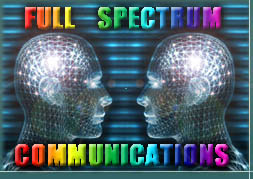



Pattern: Swish PatternThe swish pattern is a very useful "general Technique" that can be used effectively with everything from phobias (as the spider phobia image I've used in the demo to the right) to habits you want to stop. There are two very important parts of elicitation and construction to the swish. The first is the trigger imagery, or the Cue image, from the ASSOCIATED state- seen from your own eyes as you would see it in the situation. In the example of a phobia, it might be the sight of a spider, or a web. For use with smoking, it might be the sight of your hand lifting a cigarette to your mouth, or maybe just handling the pack. More on this later- other sensory systems may need to be simultaneously "swished". The second is a DISASSOCIATED image of the "you that you would be without this limitation". In the example to the right, this would be an image for a woman who feels she would be more outgoing, happy and attractive if she wasn't so petrified of spiders (hey- I'm using clip art here, bear with me!). The image must be compelling to you- it must represent you in a state that is very desirable to you, and it must be disassociated (in other words, you see yourself in the picture). Now you "swish" the pictures. Start with the big, bright associated cue image. Now put a small, dark image of the outcome picture in the lower right or left corner. The small dark image grows bigger and brighter as the cue image grows smaller and more distant as fast as you can say "swish". Then you blank the screen, or replace it with some sort of separator image. Make sure you fully blank the screen of all previous images. You repeat this sequence a total of five times. What this does is give your brain the instruction to use the trigger experience as a cue to move towards the behaviors associated with the desired outcome state. TEST this swish! Try to make the cue image, if the swish was properly done, it should tend to fade and be replaced by the second image. Test the swish in real-life situations as well. You may be able to successfully swish in the visual system, but if there are powerful trigger elements in other sensory modalities, you may need to go back and re-swish, including these new systems. An example might be smoking, where there is a strong set of visual cues, but there are also a strong set of olfactory cues as well. As always, go through the Outcome Frame before you attempt to make any significant edits to your behavior to be sure you are properly contextualizing the changes, etc. © Copyright 2005 Full Spectrum Communications.
|